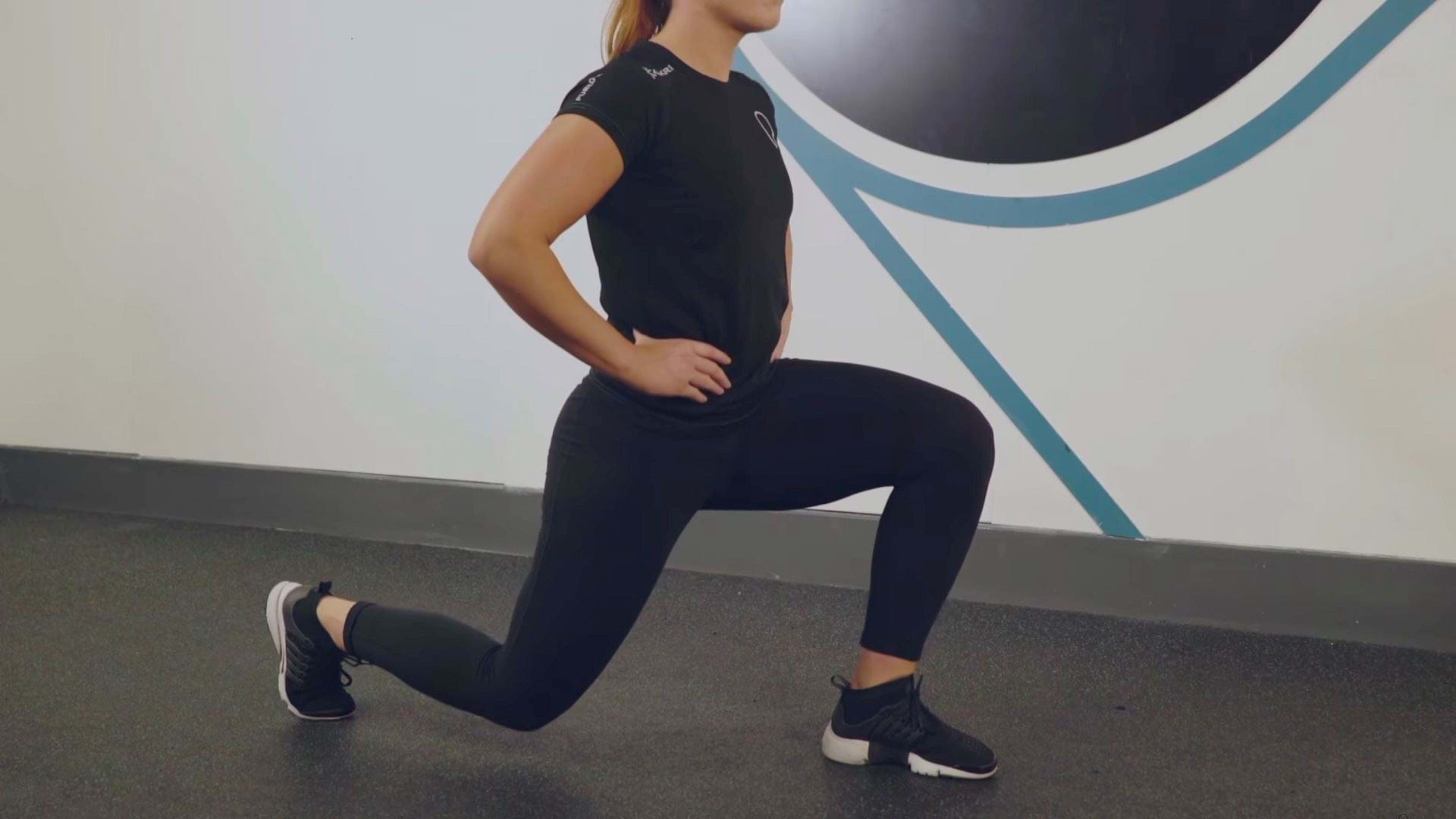Reverse Lunges
What Is A Reverse Lunge?

Reverse lunges are a variation of the lunge where the leg is stepped backwards and both knees are bent to lower the body to the floor. Some people find it easier to find the correct leg positioning with reverse lunges, as there is reduced chance of stepping too far forward with the knee coming over the foot.
Like the traditional lunge, reverse lunges work all the muscles in the lower body including the quads and calves, however the glutes and hamstrings are emphasised to a greater degree in this version. The core also works to keep the torso stable.
As a single leg exercise, reverse lunges can help to improve strength imbalances between the two sides and improve balance, stability, and coordination. It can also help to build speed and power as the positioning allows you to explode forward as you return to standing.
Once you’ve mastered bodyweight reverse lunges, you can make them more challenging by adding weight via dumbbells, barbells, kettlebells, and sandbags. Performing deficit reverse lunges are another way to make reverse lunges more challenging is to begin on a step or plate, so that the back leg can travel further down. This increases the range of motion and increases the stretch in the glute muscles, meaning they must work harder to step back up. We’ve covered both variations below.
Check out our other lunge variations: forward lunges, lateral lunges, curtsy lunges, walking lunges, sprinter lunges.
Commonly Asked Questions On Reverse Lunges
Reverse lunges work the quads, glutes, hamstrings, adductors, calves, and core. Compared to traditional lunges, the hamstrings and glutes are challenged more in this variation.
Reverse lunges are good for your knees as they help to strengthen the supporting muscles which keeps the knee joint healthy. Reverse lunges can be a good variation if you experience knee pain in forward lunges as it’s easier to prevent the knee going over the toes, which can alleviate pressure on the joint.
Reverse lunges are a good glute strengthening exercise and can help to increase glute muscle mass. We’d recommend combining lunges with other glute exercises like hip thrusts.
Reverse lunges do work the hamstrings, however we’d recommend also including hamstring focused exercises like deadlifts and hamstring curls to make sure they are sufficiently strengthened.
Reverse Lunge Tips
A common mistake made with reverse lunges is placing too much weight in the back leg. Most of the work should be coming from the front leg, with the back leg helping with balance.
Another mistake is leaning too far forward. While you can maintain a slight hinge at the hips, your torso should be held upright throughout the lunge.
How To Do Reverse Lunges
Stand with feet hip-width apart, torso upright, and core engaged.
Pause before pushing down through the left foot until you are back to standing.
You can finish all reps on one leg before moving to the other side, or alternate legs for the desired amount of reps.
Bring your foot back to the floor and repeat on the other side.
How To Do Deficit Reverse Lunges
Stand with feet hip-width apart, torso upright, and core engaged.
Pause before pushing down through the left foot until you are back to standing.
You can finish all reps on one leg before moving to the other side, or alternate legs for the desired amount of reps.
Bring your foot back to the floor and repeat on the other side.
If you’re not sure if any of the above exercises are suitable for you, please consult your doctor before you start it. Need guidance on how to perform the exercise? Ask a personal trainer at your gym.